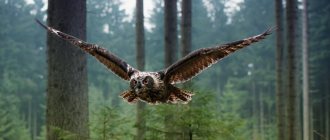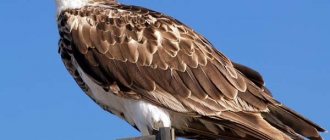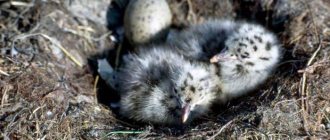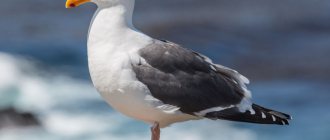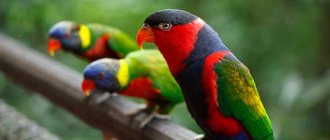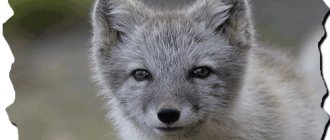Author: Dimon
23 February 2022 23:01
Community: Animals
Tags: interesting birds photo
3633
10
As you can imagine, getting an owl to pose for a photo is quite difficult. Even in captivity, these birds remain withdrawn and unsociable. Photographer Brad Wilson learned this first-hand when trying to coax owls at a nursery to turn their faces towards him. It took him many hours to take their portraits.
0
See all photos in the gallery
“It's very difficult to get an animal to look at the camera,” he says. “That was the holy grail for me.” Wilson is a master of portraiture. His Affinity series features 65 species of animals, including the white rhinoceros, white tiger, arctic fox and vulture. But photographing owls is the most difficult and interesting for him. It takes years to build trust before an owl will allow a human to touch it, and “that privilege does not extend to other people,” according to Wilson. With his works, Whistleson wanted to emphasize the nobility and independence of each bird from its caretakers. For example, many of them had damaged wings, which is not visible in the photographs. Look what he came up with:
Long-eared owl.
0
The long-eared owl often becomes prey for other birds of prey, including the great eagle owl and the spotted owl. Feeling threatened, the long-eared owl fluffs up its feathers and stretches out to appear larger. She can also sway from side to side, pretend to be wounded and jump around the nest, emitting shrill screams - all these are also ways to outsmart the predator.
The smallest owl in the world
The elf owl, or cactus owl, is a member of the Owl family. The species lives in North America. The body length of this small owl is only 12–14 cm. The bird weighs about 40 g. It is distinguished by small paws and a weak beak. But at the same time it has long wings with a span of up to 38 cm! The charming creature's tail is small - about 5 cm. The color of the elf's feathers is grayish-brown . There are inclusions of whitish and ocher spots. A characteristic feature is the presence of a white line along the back and along the edges of the wings. The cactus owl's head has yellow dots and white "eyebrows." Young individuals are not variegated, only over time they become brighter, but at first they are gray.
Did you know? Before feeding the chick a scorpion, the adult removes its sting.
Small species feed differently than large owls. So the elf owl eats insects, larvae, scorpions and spiders. Small owls hunt at dawn and dusk. During the day, elves never go out for their prey . By the way, they are not distinguished by maneuverability and noiselessness during flight. But the birds don’t worry about this: it’s enough for them to scare away the insects, forcing them to fly up. It is on the fly that cactus owls pick up food. An interesting feature of the behavior of representatives of the species is that they fly into the light (for example, from fires) - after all, in such places, many midges live in the illuminated space.
These little owls not only hunt in the air, they tend to feed on the ground and get food from the bark of trees. Owls do not eat insects right away - they carry them to a quiet place and crush them into pieces. In April, males begin to sing at night, which attracts females . Soon the females arrange cozy perches low above the ground - from 2 to 10 meters. Birds lay up to 5 eggs and hatch them for more than 20 days. Interestingly, the male brings food, and the mother feeds the chicks. It is not for nothing that the species is called cactus - after all, it is in these plants that birds’ nests are located. This is why it is not easy for predators to get to the chicks! Accordingly, the survival rate of young owls is high.
Did you know? The father of an owl family brings prey into the house with incredible frequency: he is able to fly in with an insect once a minute!
Types of owls, names and photographs
In the owl family, there are 3 subfamilies, 30 genera and 214 species, the most common of which are:
- Long-eared owl (Asio otus)
The bird has a length of 31-36 centimeters. The wingspan reaches 86-98 cm. The color of this species of owl is predominantly gray-brown with variegated spots, the chest is white. There are dark spots on the upper side of the body, and transverse stripes on the underside. On the head of the long-eared owl there are large ear tufts, which consist of six feathers.
It lives in coniferous forests, prefers European countries or northern Asia as nesting sites, and flies to northern Africa for the winter. The long-eared owl feeds on rodents, mice, voles, insects and birds.
- Great Gray Owl (Strix nebulosa)
A large bird with a length of 80 cm and a wingspan of 1.5 meters. The large-headed bird has a smoky gray color. There are dark stripes around the owl's yellow eyes.
The tawny owl feeds on rodents and squirrels. For nesting, it chooses the nests of hawks and buzzards; it does not build nests itself. The black spot under the bird's beak looks like a beard, hence the name of the bird. The bird has no feathered ears; there is a white collar on its neck. The underside of the wings hides dark stripes.
The great gray owl lives in the taiga and mountain forests in the Baltic countries, in the European part of Russia, in Siberia, Sakhalin, and Mongolia.
- Eagle owl (Bubo bubo)
It has a length of 60-75 cm, a wingspan of 160-190 cm. The weight of a male eagle owl reaches 2.1-2.7 kg, the weight of females is 3-3.2 kg. The eagle owl is the largest bird from the order Owls. The plumage of the predator is dominated by reddish and ocher colors; the eagle owl's eyes are bright orange, with tufts of elongated feathers located above the eyes.
Eagle owls live in the forests and steppes of Eurasia, hunting rodents, mice, crows, hedgehogs, hares, birds and other vertebrates.
- Great Sparrow Owl (Glaucidium passerinum)
The body length of the owl is 15-19 cm, the wingspan reaches 35-40 cm. The weight reaches 55-80 g. Moreover, males are smaller than females. The color of the owl is gray-brown or dark brown; white speckles are clearly visible on the feathers, larger ones on the back and smaller ones on the head. The underparts of the bird are white with longitudinal stripes of a brown tint. The tail is gray-brown, with 5 narrow stripes. The head is small and has a round and slightly flattened shape; the owl has no ears. The pygmy owl has white and brown rings around its eyes. The bird's eyes are yellow and there are white eyebrows above the eyes. The claws of the pygmy owl are black or yellow. The paws are fully feathered, down to the claws.
- Little Owl (Athene noctua)
A small bird with a length of 25 cm and a weight of about 150-170 g. The color of the plumage of females and males is the same. The back of the bird is light brown or sandy in color. Brown longitudinal motley spots stand out on the white belly of the owl. Round white spots are located on the shoulder feathers.
The little owl lives in southern and central Europe, northern Africa and southern Asian countries. In Russia, the owl is found mainly in the center and south of the European part, in Southern Altai and Transbaikalia. Birds live in steppe and desert areas, building nests in stones and burrows. The little owl feeds on insects, lizards, rodents, and sometimes birds.
- Barn owl (Tyto alba)
Differs from other owl species in its heart-shaped facial disc. The length of the barn owl reaches 34-39 centimeters with a wingspan of 80-95 cm. The weight of the bird of prey is 190-700 grams. The color of the barn owl is red with numerous transverse streaks, stripes and specks. In this case, the color depends on the habitat of the bird. The bird's tail is short. The barn owl's ears have an unusual asymmetrical arrangement: if the left one is at the level of the forehead, then the right one is closer to the nostril area. Thanks to this feature, the bird hears very well.
The barn owl lives on all continents except cold Antarctica. In Russia he lives only in the Kaliningrad region.
- White owl (snowy owl) (Bubo scandiacus, Nyctea scandiaca)
It has a body length of 55 to 70 cm, the bird’s weight is 2-3 kg. The wingspan reaches 143-166 cm. The color of the bird living in the tundra zone serves as camouflage, so white colors with dark spots predominate. The polar owl's beak is black and its eyes are bright yellow. The predator's paws are completely pubescent.
The polar owl lives in Eurasia, North America, Greenland, and the islands of the Arctic Ocean. The snowy owl feeds on rodents, lemmings, hares, stoats, ptarmigan, geese, ducks, and fish. White owls are listed in the Red Book.
- Hawk Owl (Surnia ulula)
It lives in forested regions in Europe, North America and Asia. In Russia it is found in Kamchatka, the Magadan region, Chukotka, and on the coast of the Sea of Okhotsk. It feeds on rodents (mice, lemmings, voles), and sometimes hunts squirrels, hazel grouse, black grouse, partridges and other birds.
The bird's length reaches 45 cm. The bird's tail is long, the color is brownish-brown with white spots, and there are thin stripes at the bottom of the body. The hawk owl's eyes and beak are yellow.
Common eagle owl
The feathered king of the taiga forests, despite his rather stern appearance, may also well join the ranks of the most beautiful owls. The scarecrow's exquisite variegated plumage and huge orange eyes, which seem to be bottomless, give the scarecrow a special elegance. And additional feather tufts form “ears” and create a particularly wise and heavy look.
At the same time, it is considered the largest bird of the owl family - its weight can reach up to four kilograms, and its wingspan can reach two meters. The size of the common scarecrow is surpassed only by its relative, the fish owl. The dimensions of this predator are especially visible during flight, while the bird flies almost silently due to its thick brown plumage, which, together with the snow-white spot on its neck, also gives it an aristocratic appearance.
Nepalese eagle owl
Due to the presence of a specific multi-colored pattern on the abdomen, this bird is also called the spotted eagle owl, and for its voice, reminiscent of the sounds of human speech, it is also popularly nicknamed “the devil in the flesh” or “the devil’s bird.” Most often, the sounds made by the Nepalese eagle owl are identified with howling, crying or buzzing, and their night cackle has given rise to many legends about kikimors and goblins living in the forest.
The “muttering” of the bird has always terrified people, so these feathered predators have become the target of destruction and today their population in the world has decreased significantly.
According to one legend, the Nepalese eagle owl is a woman who committed suicide, and its cry is a harbinger of trouble.
Great Gray Owl
This majestic beauty, with a wingspan of up to one and a half meters, enchants with its noble smoky gray or brownish color with an abundance of dark stripes. What makes this species unusual is the concentric circles around the eyes and the dark “beard” spot below the beak, to which it owes its name.
Like all owls, the great gray owl has loose plumage that dampens the sound of air currents, making its powerful flight absolutely silent. It is worth noting that this bird, unlike many of its relatives, when it finds its mate, remains faithful to it throughout its life. At the same time, she shows herself worthily in everyday life, improving and renewing her nest with the help of pine needles, moss and pieces of bark.
How to choose an owl for home keeping
To buy the right bird, you need to choose it wisely. Our advice will help you make the right choice.
Owl's choice
Tips for buying an owl:
- The size of the bird should correspond to the parameters of your apartment or house. The pet should have a spacious enclosure, or better yet, a separate room. The more cramped your conditions, the smaller the bird you can afford. Large breeds are suitable for keeping large breed owls.
- It is better to take a young individual that can be accustomed to itself in the right way.
- As for the sex of the bird, there are no specific choices.
You need to buy an owl only after carefully weighing all the pros and cons of keeping this predator in captivity.
Habitat
There is no climatic zone on planet Earth where the owl does not live, if you do not take into account the harsh Antarctica. However, it is quite difficult to meet them, since owls lead a secretive lifestyle and try to nest in secluded places.
However, their population is quite high and, if desired, you can track it down; especially patient and careful amateur researchers may even be lucky enough to take a photo of the owl.Not to mention professional ornithologists who, at the slightest sign, can find the nesting site of this bird.
White-faced owl
This miniature beauty with large orange eyes against the background of a light facial disc framed by a dark circle can also confidently claim the status of the most beautiful owl in the world. It is worth noting that she stands out favorably for her elegance among all her close relatives. Small and neat feathered “ears” earned the bird the nickname “miniature eagle owl.”
The sophisticated appearance of the white-faced owl is achieved due to the snow-white fluff of the beak and gray plumage with many subtle strokes. In addition to its bright appearance, this bird can also boast of its natural cunning. A peculiarity of this species of birds is their defensive behavior, which consists in the ability to take a fighting position and change their size, focusing on the volume of the enemy’s body.
Finding themselves next to a small bird, they swell and spread their wings, increasing their size many times over, and when they see a massive enemy, white-faced owls shrink and become practically invisible among the vegetation. This feature gave the bird another name - “transformer owl”.
Features of the species
However, having met some representatives of these birds, you can really be seriously scared. And the reason for this will not be terrible legends.
For example, the Eagle Owl is a fairly large specimen of its family, the dimensions of which can reach 0.7-0.8 meters with a weight of 4 kg. Whether it’s the pygmy owl – 20 cm and 0.1 kg – the smallest of the owls. In total, 420 species of this bird are known today. All of them differ not only in size, but also in the color of their numerous feathers and down, which serves as camouflage. And therefore it depends on the environment where an owl of one species or another lives.Since the owl is a bird of prey, the entire structure of its body is designed by nature to be suitable for hunting.
For example:
- very strong paws with claws for capturing their prey;
- the famous vision that allows you to see in the dark, which is achieved by the sensitivity of the eyes.
- hearing, in comparison with which human hearing is simply insignificant;
- a hook-shaped beak, which makes owls similar to parrots;
- The unique ability to rotate the head is achieved by an incredibly mobile neck. So the owl's head can easily make a 270-degree turn.
This is a general description of birds. Owls are very recognizable among other species.
Great Eagle Owl
This bird lives exclusively in the American open spaces and is the largest representative of owls in the New World. Local residents nicknamed this handsome horned owl for his protruding, sharp feathered “ears.”
The bird's aristocracy is given by its spotted snow-white or red belly, as well as its black, brown or reddish-brown plumage. The facial disc is framed by short, soft feathers of dark tones. The massive paws of the Great Eagle Owl are completely covered with white down. The bird especially fiercely defends its nest from uninvited guests. At the same time, the eagle owl makes aggressive sounds reminiscent of a growl, and the area controlled by one individual can reach up to two hundred hectares. In the process of courting a female, the eagle owl not only “sings songs”, but also presents her with various gifts. The latter may be small rodents, for example, a mouse or a rabbit.
Great-footed owl
Another favorite of photographers, the tawny owl is distinguished by its rounded head shape, thick, colorful plumage and a charming look reminiscent of surprise.
This bird differs from the little owl not only in its rounded spots on the head, brownish back and round facial disc, but also in its melodic trill, despite the fact that the former is capable of frightening a person with his cry and making him believe in evil spirits.
Reviews from pet owl owners
Owner reviews:
- A vulnerable and susceptible bird that is sensitive to any changes.
- May lose appetite when separated from its owner.
- Requires a lot of attention.
- It is necessary to create special conditions for maintaining the house.
- It creates many problems in choosing the optimal diet.
- The predator has sharp claws, so it is not safe to play with it.
- During the mating season, the birds are very noisy.
Keeping an owl at home is a lot of responsibility and work. If you understand all the difficulties that you will have to face, then you can safely get yourself this predatory pet.
